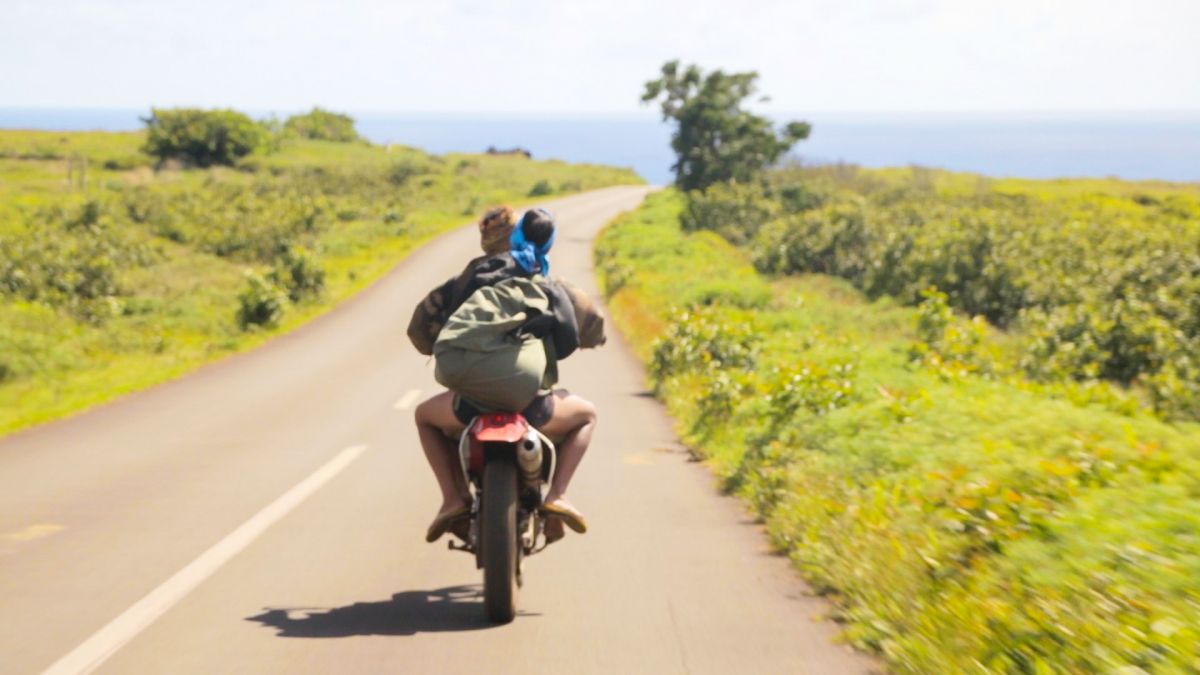
By Sergio Rapu
Don’t you wish you were living out the pandemic on a beautiful secluded island right about now? What I have learned is that, though enjoyable in the short term, island life is generally not all it’s cracked up to be with its high cost of living due to dependence on imports and low quality of services like medical care and educational services. And don’t get me started on the impact that climate change and plastic garbage patches are having on these pristine environments.
Nevertheless, with COVID cases in Hawaii being some of the lowest in the U.S., and with American Samoa, New Zealand, and Rapa Nui reporting no new infections, it is clear that island communities are beating back the virus — but it is not without hard work.

Rapa Nui during COVID pandemic. Photo credit: Waitiare Kalteneger Icka
As Rapa Nui’s hospital only has 3 ventilators and an ICU capacity of 16 people, it took a combined community effort to fend off a complete massacre on the most remote island in the Pacific.
In mid-March, my community on Rapa Nui was getting nervous as cases of COVID were rising in mainland Chile. The local municipality petitioned the national government and LATAM, the only airline that services the island, to completely stop all flights in order to halt the virus from arriving. On March 17, 2020, the island was once again completely closed off to the rest of the world. My community let out a sigh of relief.
Then, three days later, the first COVID case appeared at the local hospital. Soon, two more were identified. Again, the community sprung into action. As the municipality worked with health experts to isolate the patients and implement an island-wide lockdown, Ma’u Henua (the native organization that administers the national park) repurposed their funds gained from tourist dollars to buy Personal Protective Equipment (PPE), ventilators and rapid COVID tests from vendors as far as South Korea.
Even members of the community away from the island, like Dr. Ovahe Tepano and my sister Julianna Rapu, did their part to share scientific studies, plans for ventilators and facemasks for printing on 3D printers, and other relevant information via Facebook and WhatsApp.
In the midst of all this, nearly 1,000 tourists were still stranded on Rapa Nui. So, the local government along with some hotels provided free stays and food for many who had run out of money while waiting for a flight home.

Rapa Nui during COVID pandemic; photo credit: Waitiare Kalteneger Icka
Eventually, two chartered planes took the stranded passengers back to mainland Chile. Although the trip had turned into something they never had expected, a few tourists who I spoke with were floored by the hospitality provided to them in the face of a global crisis. It was clear to many in Rapa Nui that the pandemic would cause tourism to stop for at least the next year.
https://www.instagram.com/tv/CAnbdjsA-Nr/
It was important to provide a helping hand to those visitors who needed it the most, and in that way give thanks to the industry that had fed us for so long.
And now, what will feed Rapa Nui?
For as long as I can remember, there have always been farmers on the island but that took second place to tourism and in doing so it cemented our dependence on foreign goods.
Today, new efforts have been made to revive local agriculture. Families are starting to plow fields that have long gone fallow and build greenhouses for the winter that is approaching. Old farming families like the Tuki-Roes are becoming our community’s leaders by providing free produce and guidance to those who are in need.

My community is working together to reinvent itself and survive. It’s what my ancestors did over and over again when faced with new challenges, including when our population was decimated by epidemics brought by Western explorers. Once again, the lessons of our past are guiding us into the future.
Tourism will return to Rapa Nui in some shape or form, but now we are able to plan for it as opposed to just adapt to it. I hope this new era of tourism can better promote the values held by my culture: a deep respect for the land, our past, and our familial relationships.
These values were present when tourism first started in Rapa Nui nearly 50 years ago; families would bring visitors into their homes, feed them, and share our culture with them. And in turn, those visitors felt part of our community, often maintaining long-distance relationships with us years after they left.
I hope this is the type of tourism we can rebuild, where tourists invest and care for the places they visit and we can all, once again, be reminded of the global community of which we are part.

The author, filmmaker Sergio Rapu, holds his infant son on Rapa Nui
Native Rapanui filmmaker Sergio Mata’u Rapu is the only Easter Islander working in production in an English-speaking country. He has spent the last 15 years shooting and producing documentaries that have aired on History Channel, Travel Channel, National Geographic, and NOVA. Through his work, Sergio aims to show the diversity of life through thought-provoking media to inspire resolutions to social, economic, and environmental conflicts.

